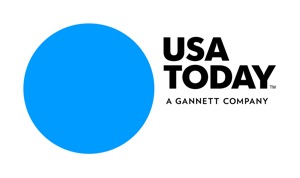Dvar Torah – Chol Hamoed Passover
5773/2013
As the Israelites leave Egypt, with Moses leading the way,
everyone is full of hope, fear, and wonder.
The after-effects of the plagues, the Egyptians handing over gifts on
the way out, are still in the air, and Moses is full of deep reflection, but he
feels something pricking at him, cannot figure out what it is. With each step that he takes, something is
irritating him, he can feel it. It is
slowing him down. Chaim the shepherd is
walking just behind him, smiling. Moses
smiles back. Ah, he says to himself, God
is reminding me to slow down, to experience this moment, to be humble as I lead
the people – Thank you, God! After 10
years in the wilderness, he still feels this irritation, always in the same
place. One day, out of pure curiosity,
he looks over his shoulder as he is walking and sees Chaim the shepherd again,
and with each step Moses notices that Chaim is stepping on his heel, rubbing
his ankle and causing his sandal to pop up.
There are moments when we begin to wonder whether we are
feeling inspired, or just living with all the typical comforts and discomforts,
or ideally a combination of the two would be ideal.
During this middle Shabbat of Pesach, we are all like the
Israelites, walking in the middle of the wilderness, coming off the high of the
Seders and settling into a new pattern, especially a new diet for the next
several days.
The Torah portion follows the same range of emotions. Giving of the Torah at Sinai lifted us up to
the heights, as the Rabbi of Ger might say, at Sinai our souls lifted up closer
to their source in the Eternal One. Then
everything came crashing down as we turned to the Golden Calf in a moment of
national weakness. Fascinating then,
that as we read from this section in Exodus that one verse reads ‘Do not make
idols [to worship]’ and the very next verse, without any hesitation or break in
between, says ‘Keep the Festival of Matzah for 7 days…for in the month of Nisan
you went free from Egypt.”
We need to refocus ourselves after the Seders, reset
ourselves to adjust to these middle days without a major ritual event, and to
make sense of the 7th and 8th days of the holiday that
also do not feature another Seder or other specifically Passover ritual or
event.
It is at this time that we, just as the people at Sinai did,
could get bogged down in the low after the Seder high. The Rabbi of Ger (Gora Kalwaria, south of
Warsaw) teaches a classic lesson that chametz, the leavened products we do not
eat on Pesach, represent over-confidence, a too deep sense of our own esteem,
we might call it arrogance – as represented by the ‘inflated’ quality of
leavened bread that rises. And he points
out that in terms of the letters, there is only a one letter difference in
Hebrew between chametz and matzah, chet-mem-tzadi, mem-tzadi-heh – hay and chet
are the unique letters in each word. In
matzah the key letter is hay, a horizontal-vertical with a small dot below –
that small dot represents the humble, simple bread of Passover, and the quality
of humility and gratefulness we feel for being free. The chet in matzah represents the way that
the small dot of the hay rises up and turns into a chet, the way that leavened
bread rises, for sure a rising sense of self but we must be careful not to get
carried away, to get distracted from the message of the holiday both for us as
a nation but also as individuals – as people who are seeking to live out the
message, that since we know the sufferings of being slaves, of living under
oppression, we are sensitized and well-equipped to notice injustice in the
world and repair it.
As I read recently in Irving Howe’s wonderful book “The
World of Our Fathers”, about the Exodus of East European Jews to America in the
period of the 1880s through World War I, Romanian Jews, following repressive
decrees, the 1899 pogrom in Jassy, and subsequent mass expulsions, caused the
Romanian Jews to do something unprecedented.
They organized into ad hoc committees, and left Romania as fusgeyer –
walkers – tramping hundreds of miles across the country, walking in ‘double file, brown khaki,
military leggings, broad-brimmed canvas hats, with an army knapsack and water
bottle over the shoulder.’ Marching on
the order of a cornet, with a Romanian and a blue & white flag flying.
I hope that we can summon the energy, courage, hope, and strength
of the Romanian fusgeyer as we walk forward in this year’s Exodus, heads held
high, walking as a community, and singing together along the way.
Shabbat Shalom.
